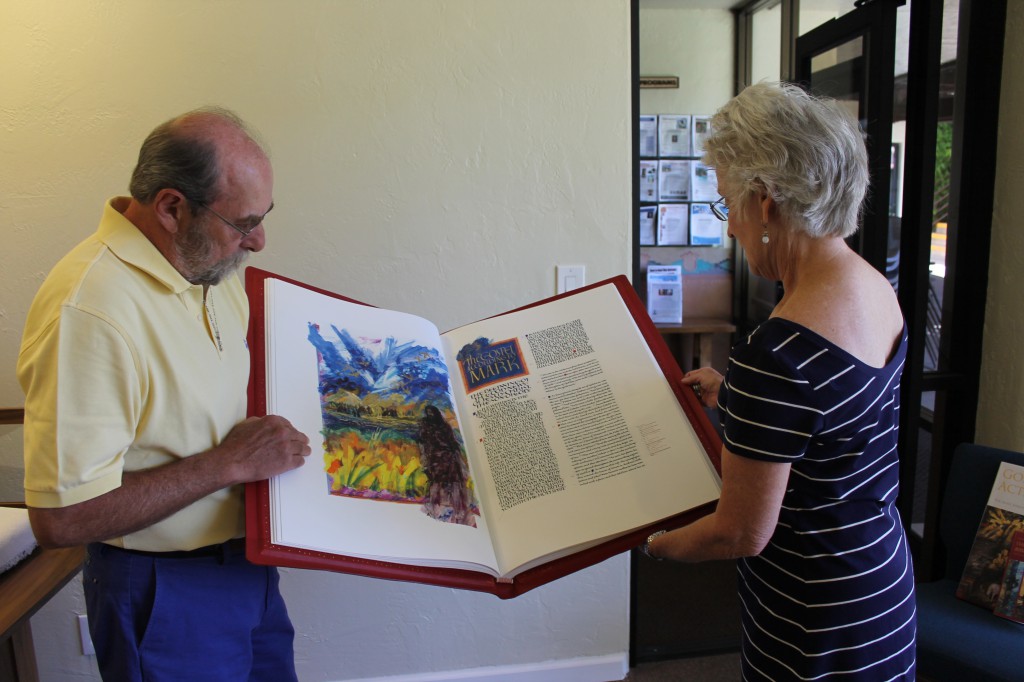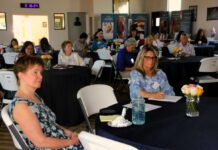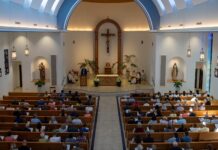
Whether it’s a leather-bound, paperback or a Kindle edition, the Bible is probably one of the most widely read books of all time. An edition the Franciscan Renewal Center owns, however, is something most Christians have never beheld.
Commissioned in 1998 by St. John’s Abbey and University in Collegeville, Minnesota, the Heritage Edition of the Saint John’s Bible consists of 1,127 pages in seven volumes. The Franciscan Renewal Center is currently housing a fine art reproduction of the original and has two on display.
Completed in 2011, the Saint John’s Bible was created completely by hand using quills and paints that were hand-ground minerals and stones written on calfskin vellum, which makes the pages translucent.
[quote_box_right]Twilight Retreat
July 30: 6 p.m. dinner, 7 p.m. presentation by Larry Fraher
Franciscan Renewal Center, 5802 E. Lincoln Dr. in Scottsdale (map)
$20 includes the dinner and presentation.
Registration required: www.thecasa.org or call (480) 948-7460.[/quote_box_right]Charlie Brown, general manager of the Franciscan Renewal Center, said the Saint John’s Bible is a “beautiful teaching of the history of the Bible.” Brown hopes many people will attend a July 30 presentation by Larry Fraher that will examine various pages and explain how the Saint John’s Bible was created. Fraher is the director of catechetical ministries at Blessed Sacrament Parish in Scottsdale.
The type of artwork in the Saint John’s Bible is known as illumination and it’s all crafted by hand. The Saint John’s Bible contains over 100 such illuminations.
Paula White, an active member of the Franciscan Renewal Center, was a docent at the Phoenix Art Museum several years ago, where she had experience with the Saint John’s Bible. The main difference between the original and the reproduction, White said, is the paper that is used for the pages.
“Here at The Casa we have a few docents who are alumni from St. John’s University and because of them we were able to have the Heritage Edition of the Bible donated,” White said. “Many people went to visit the Bible while it was at the museum and one of our docents thought it would be a wonderful idea for people to come and be able to visit the Bible at the Casa.”
The Franciscan Renewal Center is so committed to sharing the beauty of The Saint John’s Bible that they constructed the Bible Room in order to keep the work of art on permanent display Docents are currently being trained and will be able to give tours of the Bibles on display at the center.







